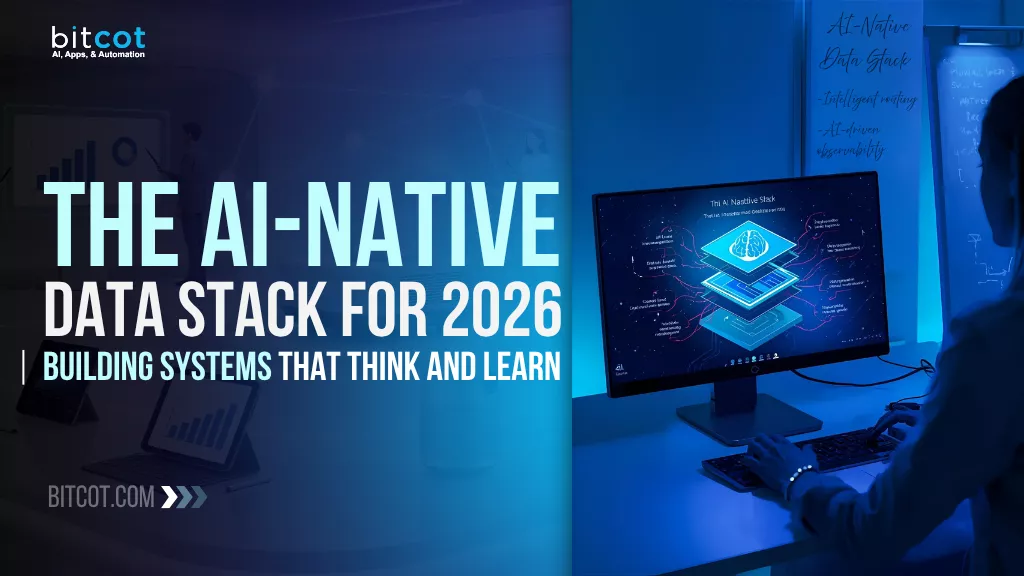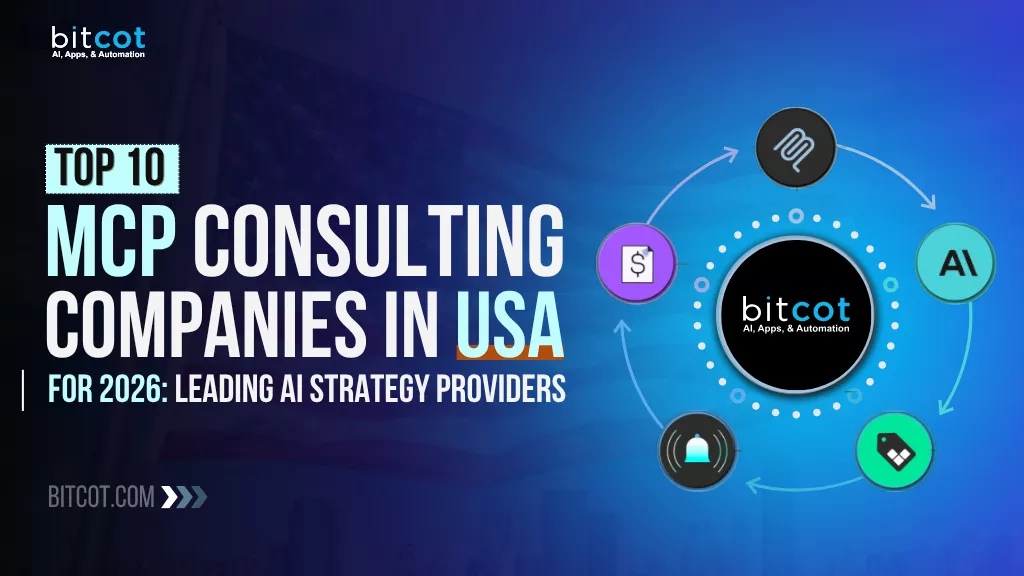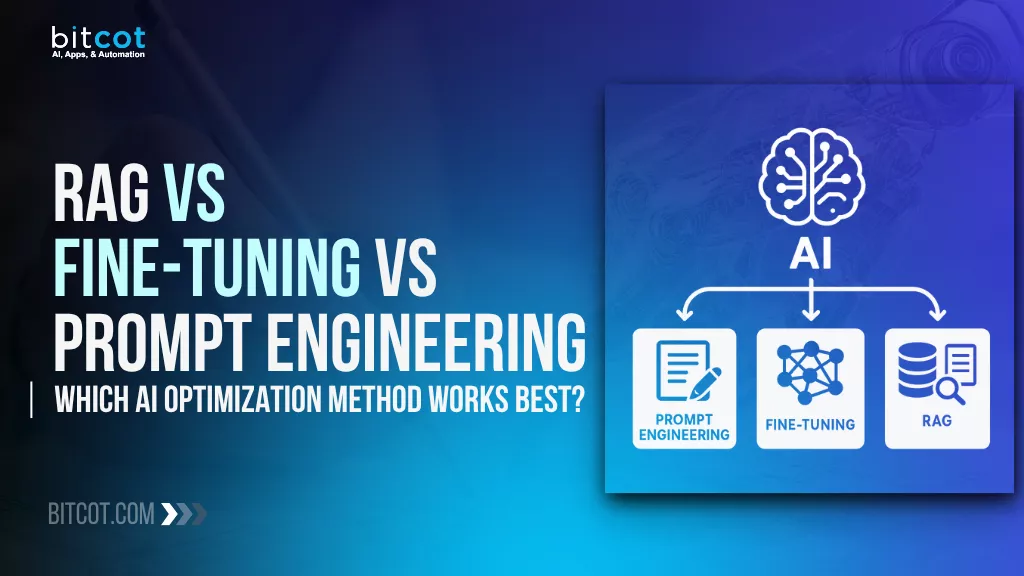
Build professional UI components in minutes instead of weeks. Fortune 500 companies are cutting development costs by up to 70% using this approach. Don’t let 60% of your budget go to waste on basic UI.
Building modern web applications has never been more challenging. While businesses race to deliver cutting-edge digital experiences, development teams are drowning in complex UI implementation requirements, tight deadlines, and the constant pressure to innovate faster than ever before.
If you’re a business owner or CTO facing yet another delayed product launch because your development team is spending weeks building basic UI components from scratch. Meanwhile, your competitors are already in market with polished interfaces that took them a fraction of the time to develop. The frustration is real, and the cost of slow development cycles is eating into your competitive advantage.
Enter v0 by Vercel and its thriving community ecosystem. This revolutionary AI-powered UI generation platform has transformed how businesses approach frontend development. Working alongside an AI automation agency can help you leverage these powerful tools to accelerate your development timeline while maintaining high-quality standards.
Let’s explore the top 10 AI-generated UI components you can create with v0 that are reshaping how modern businesses build their digital presence.
What Makes v0 Community Components Revolutionary
The v0 platform has created something unprecedented in the development world: a community-driven ecosystem where developers share reusable UI components that integrate seamlessly with modern frameworks like Next.js, React, and Tailwind CSS. These components work well with popular tools like Next.js, Shadcn, and Tailwind CSS, providing fast, clean solutions ideal for developers using these frameworks.
Unlike traditional component libraries that require extensive customization, v0 community components are designed for immediate implementation. They’re built with best practices in mind, ensuring accessibility, performance, and scalability right out of the box.
Also Read: How to Integrate V0.dev with Cursor: A 2025 Guide
The community aspect is what sets v0 apart from other solutions. Developers worldwide contribute their expertise, creating a rich repository of battle-tested components that solve real-world business problems.
Why Business Leaders Should Care About v0 Components

For non-technical founders and business leaders, understanding the value proposition of v0 components is crucial for making informed technology decisions. These components directly impact your bottom line through reduced development costs, faster time-to-market, and improved user experience.
Traditional UI development can consume 40-60% of frontend development time. With v0 components, teams can reduce this overhead by up to 70%, allowing developers to focus on core business logic and unique features that differentiate your product.
The accessibility features built into these components also protect your business from potential legal issues while ensuring your product reaches the broadest possible audience. This is particularly important as accessibility compliance becomes increasingly mandatory across various industries.
How v0 Components Transform Development Workflows
The integration process with v0 components represents a paradigm shift in development methodology. Instead of building UI elements from scratch, developers can describe their requirements in natural language, and v0 generates production-ready code instantly.
Here’s how the workflow typically unfolds: A product manager or designer describes the desired component functionality, v0 generates the initial code, and developers can then customize it to match specific brand requirements. This collaborative approach bridges the gap between technical and non-technical team members.
Also Read: How We Used V0.dev to Build a Client Website with Just a Few Prompts
Professional AI development services can help organizations establish these workflows effectively, ensuring maximum productivity gains while maintaining code quality standards.
Top 10 AI-Powered UI Components Every Business Should Create with v0
Note: To access these components, visit v0.dev and use the natural language prompts provided below. You can also customize existing components from shadcn/ui directly in v0.
1. Dynamic Dashboard Components
How to Generate: Visit v0.dev and prompt: “Create a modern dashboard with interactive charts, KPI widgets, real-time data display, and responsive grid layout for business analytics. Use white background (#FFFFFF) with blue accents (#1E40AF), green for positive metrics (#10B981), red for alerts (#EF4444). Include 6 KPI cards with trend indicators, Recharts line/donut/bar charts, date picker, sidebar navigation, and mobile-responsive design with card shadows and rounded corners.“
Modern dashboard layouts that transform raw data into actionable insights through interactive charts, KPI widgets, and real-time monitoring capabilities. These components are engineered for high-performance data visualization and scalable across multiple screen sizes, making them perfect for SaaS platforms, analytics tools, and business intelligence applications.
Key Features:
- Real-time data binding with WebSocket integration for live updates
- Customizable widget library including charts, metrics, and progress indicators
- Responsive grid system that adapts to desktop, tablet, and mobile devices
- Dark/light theme support with branded color schemes for consistent user experience
2. Advanced Form Builders
How to Generate: Prompt: “Build a multi-step form wizard with conditional logic, real-time validation, progress tracking, and modern UI design. Use purple gradient background (#7C3AED), white cards with rounded-2xl corners, floating labels, progress bar showing steps (Personal Info → Company → Preferences → Review), conditional field display, file upload with drag-drop, social login buttons, and mobile-responsive design with auto-save functionality.“
Sophisticated form components that handle complex data collection scenarios with multi-step wizards, conditional logic, and intelligent validation. These forms reduce user drop-off rates while ensuring data accuracy and accessibility compliance, making them essential for lead generation, user onboarding, and complex business processes.
Key Features:
- Multi-step form wizards with progress tracking and save-draft functionality
- Dynamic field rendering based on user selections and business rules
- Built-in validation with real-time feedback and error handling
- Integration with popular form services and CRM platforms
3. eCommerce Product Catalogs
How to Generate: Prompt: “Create an e-commerce product catalog with advanced filtering, search functionality, product cards, and shopping cart integration. Use white background, orange CTAs (#F97316), blue links (#2563EB), product cards with hover effects, left sidebar filters, price range slider, star ratings, wishlist hearts, shopping cart with quantity controls, and responsive grid (1-4 columns) with lazy loading.“
Complete product showcase solutions featuring advanced filtering, search functionality, and shopping cart integration. These components are optimized for conversion with features like quick view, wishlist management, and social proof elements, essential for any business expanding their online presence or building marketplace platforms.
Key Features:
- Advanced filtering system with faceted search and category navigation
- Product comparison tools with side-by-side feature analysis
- Integrated shopping cart with quantity management and price calculations
- Social proof elements including reviews, ratings, and recommendation engines
4. Interactive Data Tables
How to Generate: Prompt: “Design an enterprise data table with sorting, filtering, pagination, bulk operations, and export capabilities for large datasets. Use white table with gray alternating rows (#F9FAFB), dark header (#374151), blue row selection (#DBEAFE), resizable columns, inline editing, checkbox selection, bulk action toolbar, advanced filters, CSV/Excel export, and virtual scrolling for performance.“
Enterprise-grade table components that handle large datasets with sophisticated sorting, filtering, and export capabilities. These tables support complex business requirements including bulk operations, inline editing, and hierarchical data display, crucial for applications requiring detailed data presentation and management.
Key Features:
- Virtual scrolling for optimal performance with thousands of rows
- Advanced filtering with date ranges, multi-select, and custom operators
- Bulk operations toolbar with export to CSV, Excel, and PDF formats
- Inline editing capabilities with validation and undo functionality
5. Authentication Flow Components
How to Generate: Prompt: “Create a complete authentication system with login, registration, password recovery, social login, and multi-factor authentication. Use blue-purple gradient background (#3B82F6 to #8B5CF6), white centered cards with rounded-3xl corners, floating labels, password strength indicator, social login buttons (Google, Facebook, GitHub), OTP input, remember me checkbox, and mobile-responsive design.“
Complete user authentication systems featuring secure login, registration, password recovery, and social media integration. These components prioritize security best practices while providing seamless user experiences across web and mobile platforms, essential for any application requiring user management.
Key Features:
- Multi-factor authentication with SMS, email, and authenticator app support
- Social login integration with Google, GitHub, Facebook, and LinkedIn
- Progressive profiling for gradual user data collection
- Security features including password strength validation and breach detection
How to Generate: Prompt: “Build a responsive navigation system with mega menu, sidebar navigation, breadcrumbs, and mobile hamburger menu. Use white header with blue hover states (#2563EB), sticky navigation, mega menu with multi-columns and images, collapsible sidebar, hamburger animation, search bar with autocomplete, user profile dropdown, and mobile slide-out menu with smooth transitions.“
Comprehensive navigation solutions including responsive mega menus, sidebar navigation, breadcrumbs, and mobile-optimized hamburger menus. These components enhance user experience through intuitive site architecture and are critical for content-heavy websites and complex applications.
Key Features:
- Mega menu support with multi-column layouts and rich media content
- Sticky navigation with smooth scrolling and active section highlighting
- Mobile-first responsive design with touch-friendly interactions
- Accessibility features including keyboard navigation and screen reader support
7. Content Management Interfaces
How to Generate: Prompt: “Create a content management interface with WYSIWYG editor, media gallery, content organization, and SEO tools. Use light gray background (#F9FAFB), white content areas, WYSIWYG toolbar, drag-drop media upload, category hierarchy, tag system, publish scheduling, collaborative editing indicators, version history, and responsive design with collapsible panels.“
Rich content editing solutions featuring WYSIWYG editors, media galleries, and content organization tools. These components streamline content creation workflows and are perfect for CMS implementations, blog platforms, and content-heavy applications requiring editorial capabilities.
Key Features:
- Rich text editor with markdown support and collaborative editing
- Media management system with drag-drop upload and optimization
- Content versioning with revision history and rollback capabilities
- SEO optimization tools including meta tags and schema markup
8. Notification Systems
How to Generate: Prompt: “Design a notification system with toast messages, alert banners, notification center, and real-time push capabilities. Use white toast cards with colored borders (green success #10B981, red error #EF4444, blue info #3B82F6), slide-in animations, auto-dismiss timers, bell icon with badge count, notification center dropdown, mark as read functionality, and mobile-responsive positioning.“
Comprehensive notification solutions including toast messages, alert banners, and notification centers with real-time capabilities. These components improve user engagement through timely system feedback and are essential for modern applications requiring user communication.
Key Features:
- Real-time push notifications with WebSocket integration
- Customizable notification templates for different message types
- Notification history and management center for user control
- Cross-platform delivery including email, SMS, and in-app notifications
9. Calendar and Scheduling Components
How to Generate: Prompt: “Create a full-featured calendar widget with event management, appointment scheduling, recurring events, and time zone support. Use white background with gray grid lines (#E5E7EB), blue today highlight (#3B82F6), multiple views (month/week/day/agenda), drag-drop event editing, color-coded categories, recurring patterns, conflict detection, and mobile-responsive touch interface.“
Full-featured calendar widgets with event management, appointment scheduling, and integration capabilities. These components support complex scheduling scenarios including recurring events, time zone handling, and conflict resolution, valuable for service-based businesses and appointment scheduling applications.
Key Features:
- Multi-view calendar support including month, week, day, and agenda views
- Drag-and-drop event management with conflict detection
- Integration with popular calendar services like Google Calendar and Outlook
- Advanced scheduling features including recurring events and time zone support
10. Landing Page Templates
How to Generate: Prompt: “Build a high-converting landing page with hero section, testimonials, pricing table, call-to-action elements, and lead capture forms. Use blue-purple gradient hero (#1E40AF to #7C3AED), white content sections, orange CTAs (#F97316), testimonial carousel, 3-tier pricing table with popular highlight, feature icons, social proof elements, mobile-responsive design, and smooth scroll navigation.“
High-converting landing page components optimized for lead generation, product launches, and marketing campaigns. These templates include hero sections, testimonials, pricing tables, and call-to-action elements designed to maximize conversion rates and support modern marketing strategies.
Key Features:
- Conversion-optimized layouts with A/B testing support
- Integrated analytics tracking for performance monitoring
- Lead capture forms with CRM integration and automated follow-up
- Performance optimization with lazy loading and image compression
How to Access These Components
Getting started with v0 components is simpler than traditional development workflows. Instead of browsing component libraries or writing code from scratch, you simply describe what you need in plain English and let AI generate production-ready React components instantly.
Method 1: Direct Generation on v0.dev
- Visit v0.dev
- Use the natural language prompts provided for each component
- Customize the generated code to match your brand requirements
- Copy the code and integrate it into your React/Next.js application
Method 2: Start from shadcn/ui Components
- Browse components at ui.shadcn.com
- Click “Open in v0” on any component
- Modify using natural language instructions
- Export the customized code
Method 3: Community Templates
- Explore community-shared templates on v0.dev
- Fork existing designs that match your needs
- Customize and adapt for your specific use case
Maximize ROI with Smart Implementation of v0 UI Components
Successful implementation of v0 components requires strategic planning and proper execution. Start by identifying your most time-consuming UI development tasks and prioritize components that address these pain points first.
Consider working with an AI website builder solution that can integrate these components seamlessly into your existing technology stack. This approach ensures compatibility and reduces implementation friction.
Also Read: v0.dev vs Cursor AI: Full Comparison, Use Cases, and Best Choice
Establish clear customization guidelines to maintain brand consistency while leveraging the efficiency of pre-built components. Document your component library internally to facilitate team adoption and knowledge sharing.
Scaling Your Development with AI-Powered Tools
The future of web development lies in the intelligent combination of AI-powered tools and human expertise. AI-powered development with v0 & Cursor represents the cutting edge of this evolution, where developers can build sophisticated applications faster than ever before.
This technological advancement doesn’t replace developers; it amplifies their capabilities. Teams can focus on solving complex business problems while AI handles routine UI implementation tasks.
The scalability benefits become particularly apparent as your business grows. New features and pages can be developed in days rather than weeks, allowing your company to respond quickly to market opportunities and user feedback.
Transform Your Development Today: The Future is AI-Powered
The era of spending weeks building basic UI components is over. With v0’s AI-powered generation capabilities, businesses are achieving what seemed impossible just months ago—professional-grade components created in minutes, not days.
At Bitcot, we’ve helped dozens of companies successfully implement AI-powered development workflows using v0 and cutting-edge tools like Cursor IDE. Our clients typically see 60-70% reduction in UI development time and significant cost savings within the first quarter.
Whether you’re a startup racing to market or an enterprise looking to modernize your development stack, we provide end-to-end AI automation services that transform how your team builds digital experiences.
Ready to Accelerate Your Development Timeline?
Schedule a Free AI Development Consultation and discover how v0 components can accelerate your next project. Our AI automation experts will analyze your current workflow and show you exactly how much time and money you could save.
Don’t let outdated development practices hold your business back—contact Bitcot today and join the businesses already leveraging AI to dominate their markets.
Frequently Asked Questions
What is v0 by Vercel and how does it work?
v0 is an AI-powered UI generation tool by Vercel that creates React components using natural language descriptions. Users describe what they want in plain English, and v0 generates production-ready code using shadcn/ui components, Next.js, and Tailwind CSS. The platform combines generative AI with frontend development best practices to accelerate UI creation.
Are v0 community components free to use in commercial projects?
Most v0 community components are open source and free for commercial use, but it’s important to check individual component licenses. The components are typically built using open-source libraries like shadcn/ui and follow standard MIT licensing. Always verify licensing terms before implementing components in production applications.
How do v0 components compare to traditional component libraries like Material-UI or Ant Design?
v0 components offer several advantages: they’re generated using AI based on specific requirements, integrate seamlessly with modern React ecosystems, and are highly customizable. Traditional libraries provide pre-built components with fixed designs, while v0 generates tailored solutions. However, established libraries may offer more comprehensive documentation and broader community support.
Can non-technical team members use v0 to create UI components?
Yes, v0’s natural language interface makes it accessible to non-technical users. Product managers, designers, and business stakeholders can describe desired functionality in plain English, and v0 generates the corresponding code. However, developer involvement is typically needed for integration, customization, and production deployment.
What are the limitations of using v0 for enterprise-level applications?
While v0 is powerful, enterprise applications may face challenges with complex business logic integration, extensive customization requirements, and specific security compliance needs. The AI-generated code may require review and modification for enterprise standards. Additionally, very specialized or industry-specific components might not be available in the community library and would need custom development.












